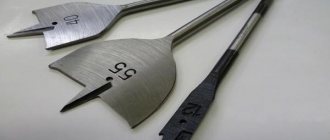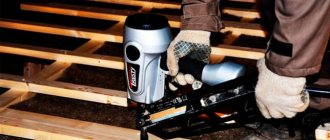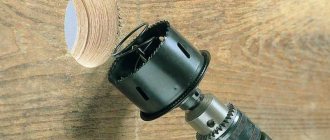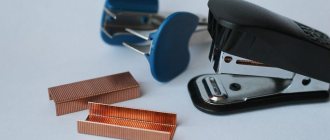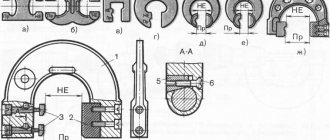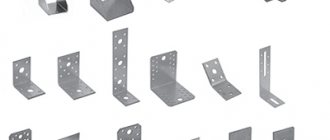A paint brush is a tool that is most widely used in all kinds of paint and varnish work. Its production does not require large time and material costs. Before starting work, brushes that have never been used should be soaped and soaked to soften the bristles. The service life of the tool will increase if the bristles are moistened with linseed oil.
Swing brushes
This type of material has a large diameter (about 6 cm), and the beam length reaches 10 cm. This tool is intended for painting or whitewashing large areas. The fly brushes in the form of a bundle are tied to another material, thereby adjusting its length.
The quality of this tool is determined by the ability of the material to take its original shape when bent. This type is very convenient to use: for example, the bristles can withstand contact with aggressive substances and solvents.
Dimensions
Modern brush sizes allow you to divide tools into narrow, medium, and wide thickness options:
- Narrow brushes have a width of one to three centimeters. High-quality processing of thin surface elements, pipes and even hard-to-reach corners is expected. Moreover, narrow acrylic brushes allow you to successfully apply decorative images made in the form of trees.
- Medium-sized brushes have a working width of 3.5 – 6 centimeters. The main task is painting doors, furniture and other household items.
- Wide tools are ideal for painting floors, ceilings, and walls. The painting brush has a beam up to 10 centimeters wide.
This difference in width allows you to choose the most suitable model for the work ahead.
Maklovitsy
Maklovits are used for applying glue or liquid paint. The shape of the material can be round (10 cm in length) or rectangular (8 cm in length). The length of the bristles is about 10 cm.
The layers of the solution are applied evenly, since the bristles contain horse hair on one half and nylon on the other. The composition of the material and careful handling of the tool guarantee a long service life.
Lifehacks for work
- When working with round samples, rotate them regularly in your hand. The fibers will be erased evenly, the quality of the layer will not be affected.
- Do not press the product too hard.
- Do not dip the pile to the full depth, submerge it 1/2.
- Remove excess paint by tapping the edges of the tray.
- If you take an instrument with a long beam length, it will become inelastic and soft. The pile will leave an uneven layer, grooves, and streaks. To avoid this, tie the bristles to length with a string.
Expert opinion
Torsunov Pavel Maksimovich
If you work with oil, glue, or lime solutions, soak the product in water during breaks. If drying oil, turpentine, kerosene - in a special solvent. Immerse until the pile barely touches the bottom. Otherwise the fibers will break or bend. It is convenient to hang the tool on a wire.
Handbrush
This type is used for painting small areas, such as windows or pipes. The diameter of the brushes reaches 6 cm. The tool is made from natural bristles and horsehair. Since the center of the painting tool is empty, it accumulates paint. It is not recommended to use a round paint brush for glue or lime mortar.
Functional tasks of brushes
When choosing brushes, it is advisable to keep in mind their level of functionality. Most often, tools are required to carry out the following work:
- applying glue for high-quality wallpapering;
- painting walls, flooring, doors;
- painting window structures and other premises;
- painting various furniture;
- painting benches installed in the garden.
In each case, brushes are needed for certain tasks, so when choosing, it is important to determine the degree of functionality and technical features of the painting tools.
Only if the right choice is made will there be a chance to evaluate the worthy performance of the work.
Custom shaped brushes
Unusually shaped devices are used to distribute paint to hard-to-reach areas. Thus, radiator brushes are smoothly curved products with a flat-shaped painting part. Most often, radiator brushes are used to paint batteries.
Fan brushes are designed for applying broad lines, while texture brushes are used for finishing for decorative purposes. To deepen your knowledge about the varieties of unusual brushes, we recommend that you familiarize yourself with photos of brushes on the Internet.
Expert advice
What type of paint brush do you use most often?
FlatRound
Wash new or unused instruments with soapy water. This will remove broken bristles and dust. After cleaning, squeeze and dry the bunch.
What to do before painting:
- Soak - the fiber will absorb moisture and increase in volume. The brush will apply the material smoothly and evenly.
- Develop - the working part will take the correct cone shape. Dip it in paint and paint the brick or concrete area.
What to do after:
- Clean the product with kerosene, then with soapy water. Alternate until the water runs clear.
- Soda cleanses piles well - immerse the bundle in the solution for 2-3 hours, rinse with warm water, and dry.
- After washing, hang and dry the instrument.
When storing the brush, wrap it in thin parchment paper - it will not lose its softness.
Features of bristles
Natural bristles are used for all types of paint, except for water-based solutions. The roughness of the bristles allows them to absorb and distribute paint evenly on the surface.
When choosing a product, you need to pay attention to the length of the bristles, their elasticity and thickness. The color of the hairs can be different: white, gray, yellow or even black.
Natural hair is covered with scales, which play an active role in the uniform distribution of the paint layer. However, such brushes are slightly stiff and elastic. They distinguish between hard and fine hair. The first type is obtained from the hair of horses or cows, and the second is obtained from the wool of fur-bearing animals.
Synthetic fibers consist of nylon, polyester and other threads. This type of bristle is elastic and resistant to mechanical damage, but synthetics do not absorb paint well enough.
However, you can get rid of the problem yourself: just split the ends of the brush. This material differs in that it is suitable for any type of paint.
How to choose the right painting tool?
Before purchasing a tool, the question arises: how to make the right choice? In fact, there is simply no multifunctional brush; different brushes are used for each situation. Builders prefer to use natural materials rather than polymers, but natural fibers are not always better than nylon. For example, synthetic brushes are purchased for mixtures with a water base; their nylon hairs tend to repel moisture. A round brush is good for small areas, while flat brushes are good for walls and other flat surfaces.
Pile material
The brush bristle material can be natural, synthetic or combined.
Natural brushes contain animal hair, usually pig bristles, cow hair, and badger hair. Thanks to its split structure, natural hair can easily absorb paint, and due to its softness and pliability, natural brushes make painting simple and quick. These brushes are great for working with oil paint or drying oil.
Brushes made of synthetic materials also have a good ability to absorb paint. But if we compare natural and synthetic brushes, we can note that the latter will last much longer. These brushes are ideal for working with water-based paints.
A bundle of combined brushes combines natural and synthetic bristles. Thanks to this composition, the wear resistance of the bristles increases, and the hard bristles of the brush are able to easily hold paint.
Working part size
Paint brushes are divided according to the size of the working part:
- The smallest diameter is 25 mm. Such a tool is used for preparing other elements or painting works.
- Workpieces with a working part circumference of 38 mm are used for work with round-shaped objects, for example, cornices or baseboards.
- Pencils with a diameter of 50 mm are well suited for processing door slots, window frames and other structures of small width.
- Tools with sizes ranging from 63 to 75 mm are considered universal and are most often used for paving walls and other wide structures.
The largest pens have a diameter of 100 mm. Their vikoristannaya is more suitable for overall surfaces, for example, walls or external walls.
Pobudova and characteristics
The task at hand is simple; it consists of three working elements:
- brush - a bundle of bristles with different parameters;
- crimp base - an attachment that reliably fixes a tuft of bristles on the handle;
- a handle, or a handle, is an element by which a tool is handled during the execution of industrial operations.
The handles are made of wood, plastic or metal, and creative brushes with handles made from natural brushes are made according to individual processing. The crimp base must be made of metal, so that the tool is not too important. The bristles of paint brushes vary in species that are recognizable from afar...

